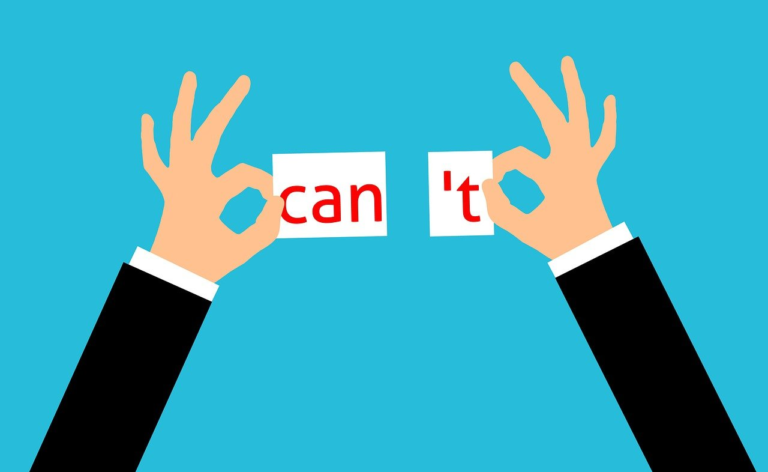Expert Tips to Boost Efficiency
Streamline, Focus, Automate: Expert Tips to Boost Efficiency
In today’s fast-paced world, time is a precious resource everyone wants to maximize. Like a well-oiled machine, individuals and businesses strive for efficiency to accomplish more in less time.
In the article ‘Streamline, Focus, Automate: Expert Tips to Boost Efficiency,’ readers will gain valuable insights and strategies to streamline processes, focus on tasks, and automate responsibilities. By implementing these expert tips, individuals and businesses can easily unlock their full potential and achieve their goals.
Identify and Eliminate Redundant Tasks
The expert tips in this context emphasize the importance of identifying and eliminating redundant tasks to streamline processes and increase efficiency.
One key aspect of streamlining workflow is identifying unnecessary tasks. By carefully examining each step in a process, individuals can determine if specific charges are redundant or no longer necessary. This could involve combining similar efforts or eliminating jobs that do not contribute to the overall outcome.
Streamlining workflow is essential for increasing efficiency, as it allows individuals to focus their time and energy on tasks that truly matter. By eliminating unnecessary tasks, individuals can streamline their processes, save time, and achieve better results.
Identifying and eliminating redundant tasks is a practical and effective way to improve productivity and optimize workflow.
Optimize Processes for Increased Efficiency
To increase efficiency, one can identify the essential steps in a process and eliminate any redundant or unnecessary tasks. This is done by streamlining workflows and optimizing operations. By identifying bottlenecks and areas of improvement, one can facilitate the flow of work and make it more efficient. This can involve rearranging tasks, automating specific steps, or delegating tasks to others.
To optimize processes for increased efficiency, one can follow these steps:
- Identify bottlenecks: Analyze the process to find areas where the workflow slows down or gets stuck. These bottlenecks can be addressed to improve overall efficiency.
- Streamline workflows: Simplify the process by eliminating any unnecessary or redundant tasks. Look for ways to combine or eliminate steps to make the workflow smoother and more streamlined.
- Automate tasks: Utilize technology and productivity tools to automate repetitive or time-consuming tasks. This frees up time and allows for more focus on higher-value activities.
Create Streamlined Checklists
Creating streamlined checklists allows individuals to easily follow the optimized process and ensure that all essential steps are completed efficiently.
By creating a checklist, individuals can break down complex tasks into smaller, more manageable steps, making tracking progress and staying organized easier. This not only helps in maintaining focus but also eliminates the chances of missing any crucial steps.
Moreover, by delegating tasks effectively, individuals can free up their time and energy to focus on tasks that require their attention. Delegation allows them to leverage the skills and abilities of others, increasing overall efficiency and productivity.
Apply Streamlining Approach to Various Tasks
By applying this approach to various tasks, individuals can eliminate redundant or unnecessary steps, increasing efficiency.
This streamlining approach can be applied to project management and customer service, among other areas. In project management, individuals can identify essential steps and eliminate redundant tasks, allowing for a more streamlined process. By optimizing the project management process by about 20%, teams can increase their efficiency and productivity.
Similarly, in customer service, applying this streamlining approach can help identify and eliminate unnecessary steps, allowing representatives to provide faster and more efficient service. Businesses can improve customer satisfaction and loyalty by streamlining the customer service process.
Overall, applying this approach to different tasks can lead to increased efficiency and productivity in various areas.
Combine or Eliminate Steps for Task Efficiency
Combining or eliminating steps can significantly improve task efficiency. This allows individuals to complete their work more quickly and effectively. By streamlining processes and identifying the essential steps, individuals can simplify their workflows and eliminate redundant or unnecessary tasks.
This approach not only saves time but also increases productivity. Additionally, automation and outsourcing can further boost efficiency. Utilizing productivity tools and web services can automate repetitive tasks, saving valuable time.
Delegating tasks that others can do, such as virtual assistant services or volunteers, allows individuals to focus only on tasks that require their attention. By combining and simplifying steps and leveraging automation and outsourcing, individuals can maximize their efficiency and accomplish more in less time.
Utilize the Pomodoro Technique for Focus
Implementing the Pomodoro Technique involves working in focused bursts with short breaks, which can enhance productivity and help individuals finish tasks efficiently. By utilizing time management techniques like this, individuals can maximize their productivity and make the most of their working hours.
The Pomodoro Technique works by setting a timer for a specific amount of time, typically 25 minutes, and working on a task with complete focus. Once the timer goes off, individuals take a short break, typically 5 minutes, before starting the next focused burst. This technique helps to maintain concentration and prevent burnout, allowing individuals to work at their peak performance.
Additionally, individuals can maximize their productivity by utilizing virtual assistants to automate and delegate tasks that others can do, freeing up time for more critical or specialized tasks.
Set Time Limits to Finish Tasks Promptly
Individuals can enhance their productivity by setting time limits for tasks, encouraging them to finish promptly, and focusing on completing their work efficiently. By implementing time management techniques and prioritizing tasks, individuals can effectively manage their workload and achieve better results in less time.
Setting specific time limits for each task helps individuals stay on track and avoid wasting time on unnecessary distractions. By allocating a certain amount of time to each job, individuals are motivated to work efficiently and complete their careers within the designated time frame. This increases productivity and allows individuals to effectively manage their time and move on to the next task without delay.
Prioritizing tasks is another important aspect of effective time management. Individuals can allocate their time and resources by identifying the most important and urgent tasks. This ensures that the most critical tasks are completed first, preventing unnecessary delays or missed deadlines. Prioritizing tasks also allows individuals to focus their energy and attention on the most impactful activities, leading to greater overall efficiency.
Implement Time Constraints for Improved Productivity
By setting time constraints for tasks, individuals can significantly improve their productivity and achieve better results in less time. Implementing time management techniques allows people to prioritize their tasks and allocate specific timeframes for completion. This approach helps individuals stay focused and motivated, as they have a clear deadline to work towards.
By setting time limits, individuals are more likely to avoid procrastination and stay on track. Furthermore, outsourcing tasks can also contribute to improved productivity. By delegating tasks that others can do, individuals can free up their time to focus on more critical or specialized tasks.
Outsourcing tasks to virtual assistants or volunteers can help streamline workflows and ensure every job is completed efficiently. Overall, implementing time constraints and outsourcing tasks are effective strategies for enhancing productivity and achieving better results.
Automate Tasks With Productivity Tools
Utilizing productivity tools and web services allows individuals to automate tasks and save valuable time. Individuals can streamline their communication processes and improve overall efficiency by automating task management.
These tools provide the ability to schedule and prioritize tasks, set reminders, and track progress, all in one place. With the click of a button, emails can be sent, documents can be shared, and appointments can be scheduled, eliminating manual intervention.
Additionally, these tools offer features such as email templates, automated responses, and collaboration platforms, making communicating and collaborating with team members easier.
Delegate Tasks to Free Up Time
After automating tasks with productivity tools, delegating tasks to free up time is another way to boost efficiency.
Delegation involves assigning tasks to others who are capable of completing them. By delegating tasks, individuals can focus on more critical or complex responsibilities requiring attention.
Outsourcing tasks to virtual assistant services or volunteers can also be an effective way to free up time and increase efficiency. Individuals can effectively delegate and streamline their workload by identifying tasks that others can do and prioritizing those that only they can do or do better than others.
Delegating tasks saves time and allows individuals to leverage the skills and expertise of others, leading to improved overall efficiency.







